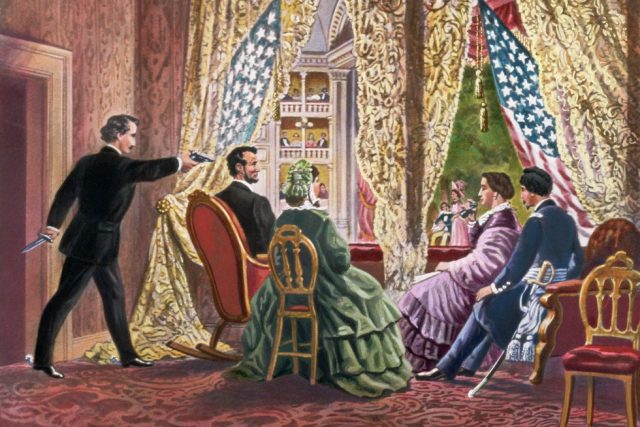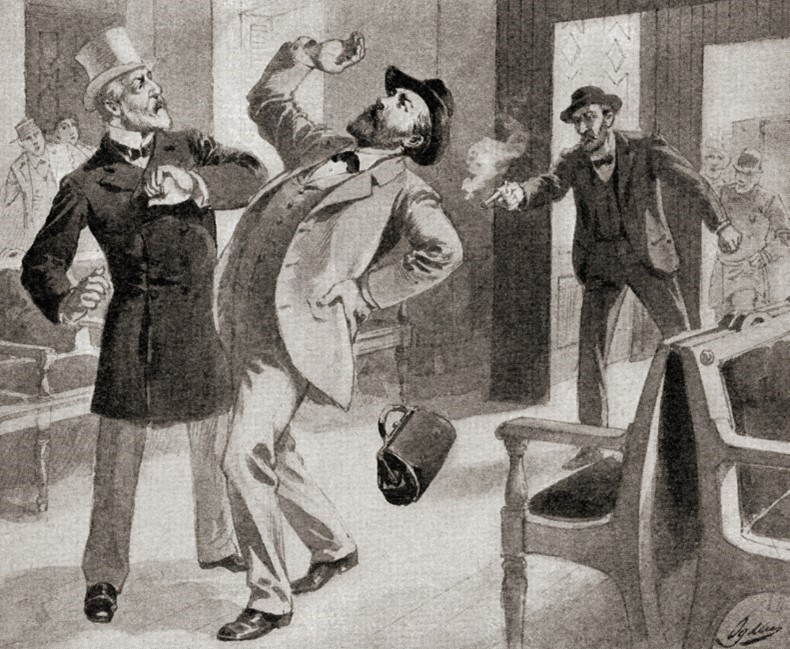
The attempted assassination of Donald Trump in the month of July sent shockwaves all over the globe, but especially America. The public perceived the events as something that could not happen in the “world’s strongest democracy”. Some asked for entire institutions to be decapitated and investigated. Some prepared themselves for armed civil conflict. Some even went as far as to (ignorantly) consider the event staged. But assassination attempts on United States Presidents or candidates for the highest office are not such a rare occurrence.
Some have been successful and some unsuccessful. Some have drastically altered the course of history and some have left it unchanged, despite the dramatic effect they have added to moments. So until we have a certainty of what July’s attempt will mean for Donald Trump’s campaign, let us remember every presidential assassination attempt in American history.
Abraham Lincoln (1865) – Successful
The assassination of Abraham Lincoln on April 14, 1865, remains one of the most significant events in American history. Lincoln, the 16th President, was shot by John Wilkes Booth, a well-known actor and Confederate sympathizer, while attending a play at Ford’s Theatre in Washington, D.C. Booth, motivated by his belief that Lincoln was a tyrant and his hope to revive the Confederate cause, managed to fatally wound the President, who succumbed to his injuries the following morning. Lincoln’s death not only plunged the nation into mourning but also significantly impacted the post-Civil War reconstruction era.
James A. Garfield (1881) – Successful
James A. Garfield, the 20th President, was shot in the back by Charles J. Guiteau on July 2, 1881, at the Baltimore and Potomac Railroad Station in Washington. Guiteau, a disgruntled office seeker who believed he was owed a political appointment, fired two shots at Garfield, one of which proved fatal after a long struggle with infections. Garfield succumbed to his wounds on September 19, 1881. His assassination led to significant civil service reform, culminating in the Pendleton Civil Service Reform Act of 1883.

William McKinley (1901) – Successful
The assassination of William McKinley, the 25th President, occurred on September 6, 1901, during a public event at the Pan-American Exposition in Buffalo, New York. Leon Czolgosz, an anarchist who believed McKinley was the embodiment of corporate oppression, shot the President twice. McKinley initially seemed to recover, but gangrene set in, and he died on September 14. McKinley’s death propelled Theodore Roosevelt to the presidency, significantly influencing the progressive era of American politics. But little did Roosevelt know at that time, he would be next to take the bullet.

Theodore Roosevelt (1912) – Unsuccessful
Although not an incumbent President at the time, Theodore Roosevelt faced an assassination attempt on October 14, 1912, during his campaign for a third term as President. John Schrank, a mentally ill man who claimed to be acting on a vision from the ghost of William McKinley, shot Roosevelt in Milwaukee, Wisconsin. Remarkably, Roosevelt delivered his speech with the bullet still lodged in his chest, famously stating, “It takes more than that to kill a Bull Moose.” The bullet was never removed, and Roosevelt recovered, though he did not win the election. Trump critics point out to this example when theorizing his potential defeat in the 2024 race.

Franklin D. Roosevelt (1933) – Unsuccessful
On February 15, 1933, just weeks before Franklin D. Roosevelt’s inauguration, Giuseppe Zangara attempted to assassinate him in Miami, Florida. Zangara, an Italian immigrant with a deep-seated hatred for politicians, fired several shots at Roosevelt, who was delivering a speech from an open car. Although Roosevelt was unharmed, Chicago Mayor Anton Cermak was fatally wounded. This incident underscored the precariousness of Roosevelt’s early presidency, though it did not deter his resolve to lead the nation through the Great Depression.
Harry S. Truman (1950) – Unsuccessful
The assassination attempt on Harry S. Truman, the 33rd President, occurred on November 1, 1950. Two Puerto Rican nationalists, Oscar Collazo and Griselio Torresola, sought to kill Truman to draw attention to the Puerto Rican independence movement. They attacked Blair House, where Truman was residing during White House renovations. Torresola mortally wounded a police officer but was killed by another officer, while Collazo was wounded and captured. Truman was unharmed, but the incident highlighted the ongoing political tensions within the United States.
John F. Kennedy (1963) – Successful
John F. Kennedy, the 35th President, was assassinated on November 22, 1963, in Dallas, Texas. Lee Harvey Oswald, a former Marine with communist sympathies, fired three shots from a nearby building, fatally wounding Kennedy. The assassination shocked the world and led to numerous conspiracy theories and investigations, including the Warren Commission, which concluded that Oswald acted alone. Kennedy’s death marked a turning point in American history, symbolizing the end of an era of perceived innocence and the beginning of a more tumultuous period.
![Rear seat of JFK's limousine, right after the assassination, 1963. (originally in color) [900x676] : r/HistoryPorn](https://i.redd.it/1dnqo7xlxrb71.jpg)
Gerald Ford (1975) – Unsuccessful
Gerald Ford, the 38th President, survived two assassination attempts within seventeen days in September 1975. The first attempt, on September 5, was by Lynette “Squeaky” Fromme, a member of the Manson Family cult, in Sacramento, California. Fromme aimed a pistol at Ford but was quickly subdued by Secret Service agents. The second attempt, on September 22, was by Sara Jane Moore in San Francisco. Moore fired a shot at Ford but missed, thanks to a bystander who intervened. These attempts highlighted the volatility of the 1970s and the dangers faced by the President.
.jpg)
Ronald Reagan (1981) – Unsuccessful
Ronald Reagan, the 40th President, was nearly killed on March 30, 1981, by John Hinckley Jr., who sought to impress actress Jodie Foster. Hinckley fired six shots at Reagan outside the Washington Hilton Hotel, hitting him in the chest. When he awoke, right before surgery, he found out the bullet was entrenched closely to his heart arteries. He joked with the doctors saying “I hope you are all republicans!”. Reagan’s press secretary, James Brady, was also critically injured, leading to the Brady Handgun Violence Prevention Act. Reagan’s survival and swift recovery bolstered his image and had a significant impact on his presidency, reinforcing his resilience and resolve.
Bill Clinton (1994) – Unsuccessful
Bill Clinton was the last president, before Trump, to hear or feel bullets shot at his person. On October 29, 1994, Francisco Martin Duran fired at least 29 rounds from a semi-automatic rifle at the White House, believing that he could kill President Bill Clinton. Duran, who had a history of mental illness, was subdued by tourists and Secret Service agents. Clinton was inside the White House at the time and unharmed. This incident underscored the persistent threats to presidential security even within the confines of the White House.
To conclude, the act of attempting to assassinate a president is a profound manifestation of political violence, reflecting deep philosophical and ideological underpinnings. Historically, assassins often believe that their actions serve a higher purpose, such as the preservation of certain values or the rectification of perceived societal injustices. But such events can also occur from a profound delusion or mental illness.
As far as Trump’s would-be assassin (Thomas Crooks) goes, we might never know what drove him to this gesture, since dead men tell no tales. Was it genuine anti-Trump radicalization? A demented wish to enter the history books in this manner? Whatever the answer, it only emboldened Trump’s campaign. But we are yet to see if he will share Roosevelt’s destiny, of winning the right to keep his life, but losing the race, or if it will prove exactly what was needed to make it cross the finish line a la Reagan.



 Subscribe
Subscribe